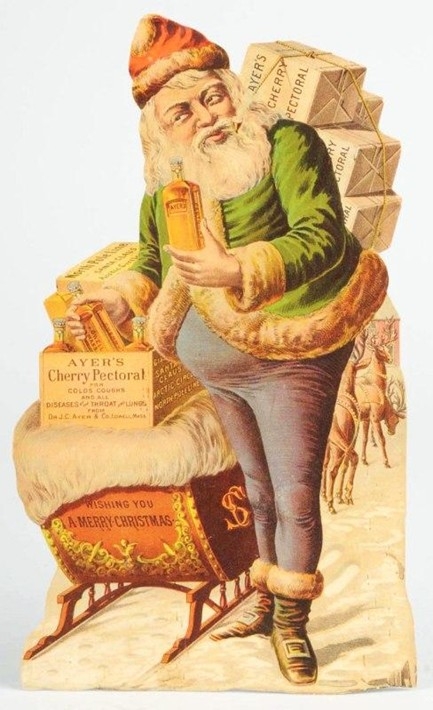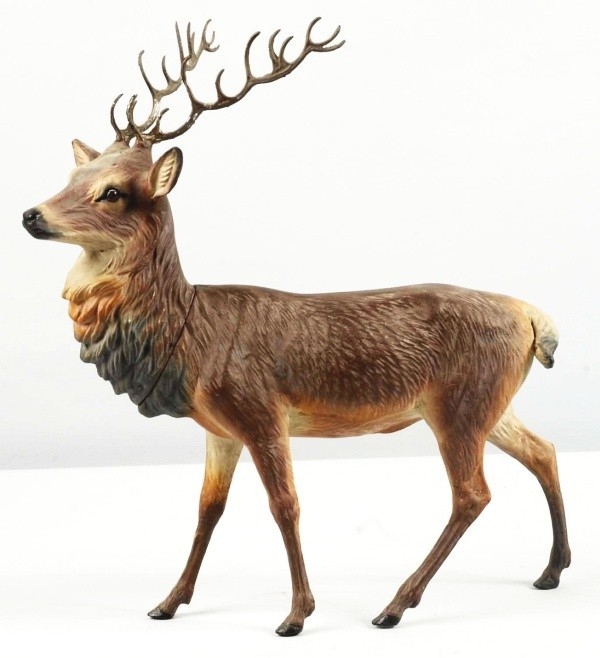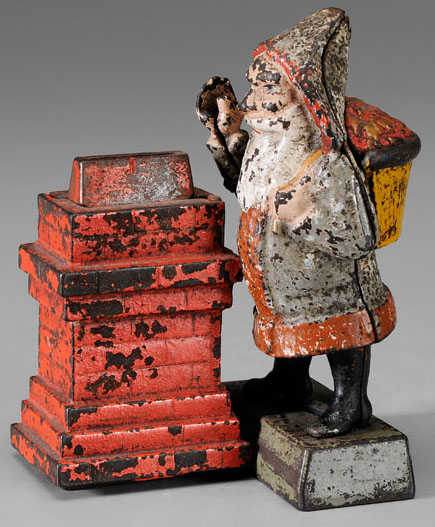From Advent calendars to wreaths, and more, the biggest spending holiday of the year features the biggest opportunity for collectors with an almost unlimited array of items to satisfy every taste and budget. Here are the most common Christmas collectibles:
Advertising
Manufacturers pull out all the stops in their Christmas advertising campaigns. Probably the most successful of all time was the Coca-Cola campaign of 1931, in which artist Haddon Sunblom gave us the rosy cheeked, fur and velvet clad Santa Claus we know today. Collectible advertising includes ads from publications, special edition tins and packages, store displays, die-cuts (pictured), and advertising postcards.
Advent Calendars
The first one was printed in 1908, and since their introduction, have been made of paper, cardboard, wood, and fabric.
Books
Look for vintage, well preserved copies of illustrated children’s books, especially those illustrated by Frances Brundage (1854-1937), Kate Greenaway (1846-1901), Richard Doyle (1824-1883) and Tasha Tudor (1915-2008) T’was the Night Before Christmas is probably the best known, but other popular volumes include early Christmas cookbooks, and, of course, handsome editions of A Christmas Carol by Charles Dickens.
Candles & Candle Holders
Always a big part of holiday decorating, from figurals to geometrics, both candles and candle holders are available in an almost infinite variety of vintages, materials and price ranges.
Cards and Postcards
The first Christmas card was created by Henry Cole of London in 1843, and people have been sending Christmas greetings via post ever since. The most beautiful and highest quality cards and postcards were produced from 1890-1930, and these are avidly sought by collectors.
Candy Containers
The most collectible of candy containers are German made, and were meant to last no longer than the holiday itself.
Dolls
Special edition Christmas dolls abound, from American Girl to Barbie to Madame Alexander to Cameo Doll Co.
Jewelry
Jewelry designed specifically to be worn during the holidays has been produced for several centuries. High quality costume pieces from the 1920’s-1960’s, are still affordable and very popular. This Bakelite brooch has a Christmas motif.
Nativity Sets
First appearing in 13th century Italy, nativity sets have been fashioned from marble, wood, coral, plaster mother-of-pearl, pottery, wood, plastic, paper and more. These are probably the earliest of Christmas collectibles.
Nutcrackers
Originated in Germany, where they began to be mass produced by Wilhelm Fuchtner in 1872. At first, the figures were always soldiers, but now are available as golfers, skiers, tennis players, rock musicians, pirates, bakers, famous personalities and more. Although inexpensive Nutcrackers made in China are everywhere, collectors look for nutcrackers from Fuchtner, Christian Steinbach, or Christian Ulbrecht.
Plates
Meissen, Wedgewood, Spode and Royal Copenhagen were producing collectible porcelain plates by the middle of the 18th century, but Bing & Grondahl was the first to create the limited edition plate. By 1910, Rosenthal and Royal Copenhagen were producing an annual Christmas plate, and by the 1950’s millions were produced annually in every price range by a long list of manufacturers. Pottery makers have also made plates with Christmas themes including Pennsbury and Breininger redware.
Santa
Although Santa’s looks have change over the years, he’s always been a popular Christmas collectible. Because he’s been so well documented, it’s often easy to determine the age of a Santa figure. From the tall and thin St. Nicholas, to the Jolly old Elf we love today, Santa has been rendered in every possible form and material. His likeness can be found on every type of Christmas collectible, like the cast iron bank pictured.
Tablecloths
Christmas linens are eagerly sought by those who love textiles. Whether its handmade lace, Irish linen, or the colorful screen print patterns of the 1930’ & 40’s, no Christmas dinner is complete without its festive covering.
Wreaths
The circle form symbolizes everlasting love, and the wreath is found in a variety of materials and forms, from ornaments to table decor.
-By p4A Contributing Editor Susan Cramer.
Reference & Further Recommended Reading:
To search the Prices4Antiques antiques reference database for valuation information on hundreds of thousands of antiques and fine art visit our homepage www.prices4antiques.com







No comments
Comments feed for this article